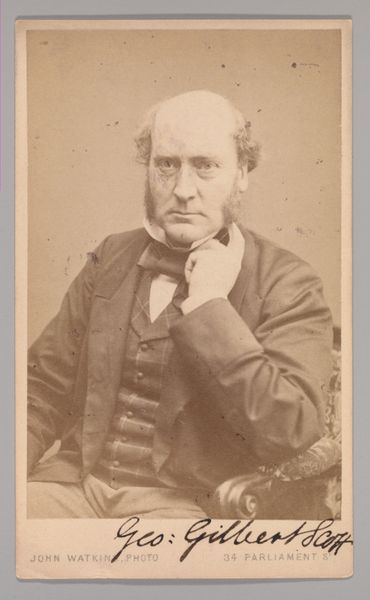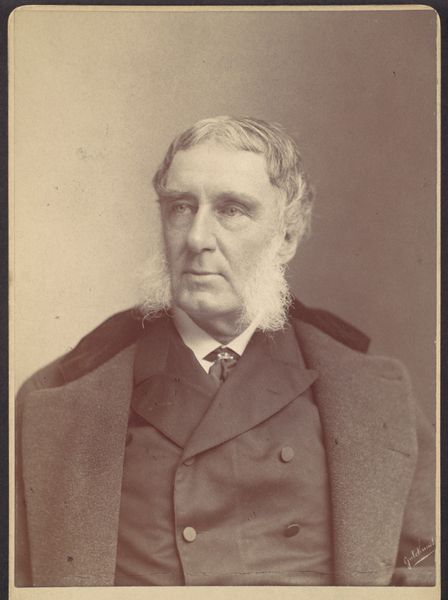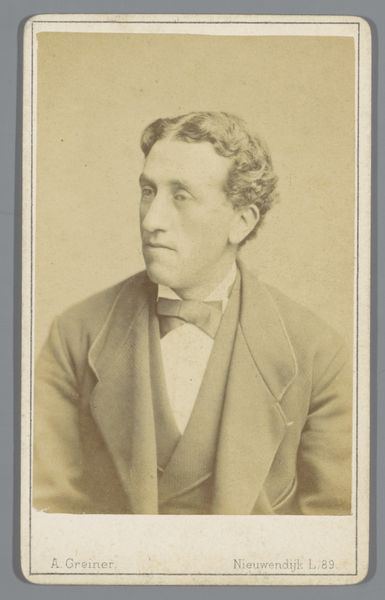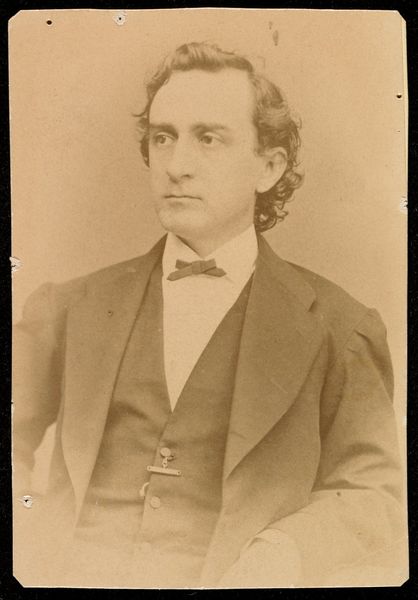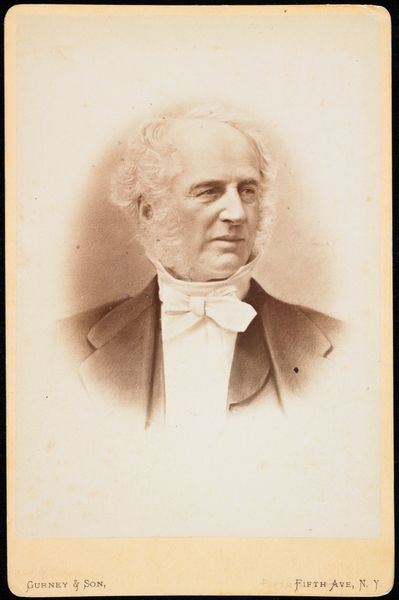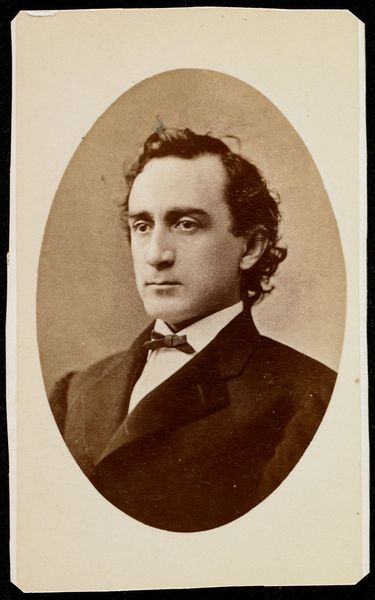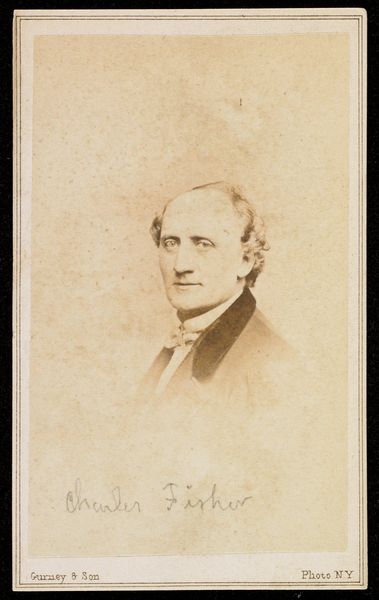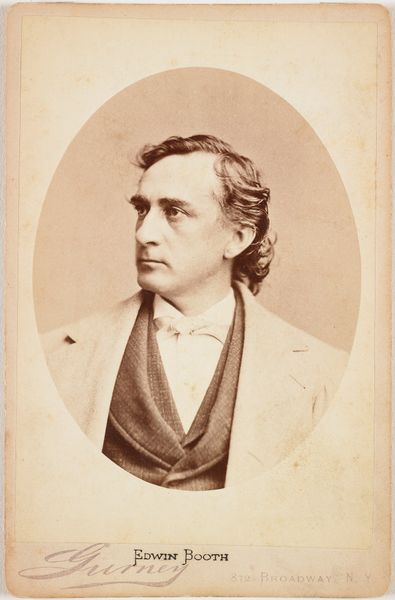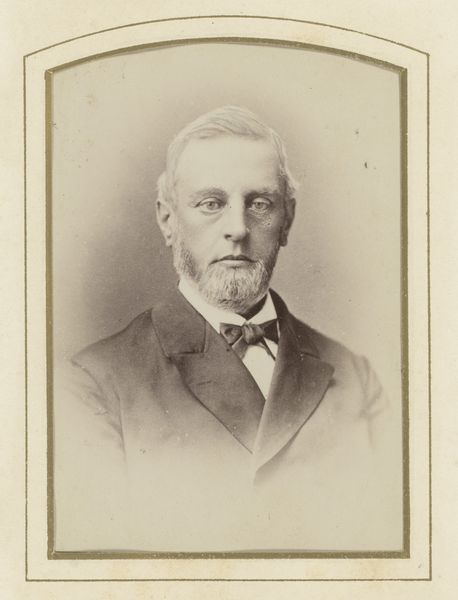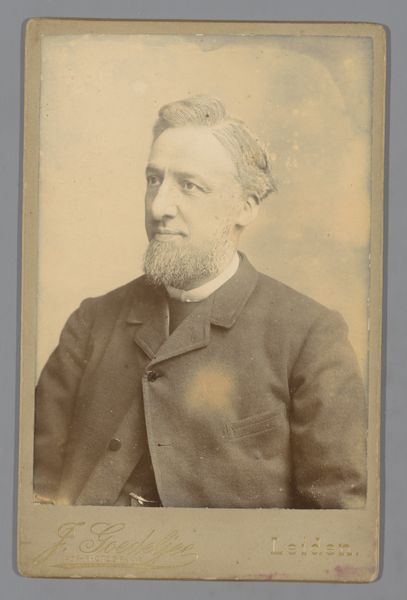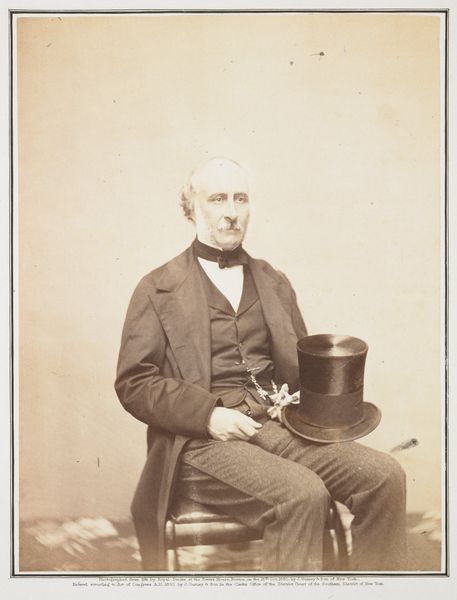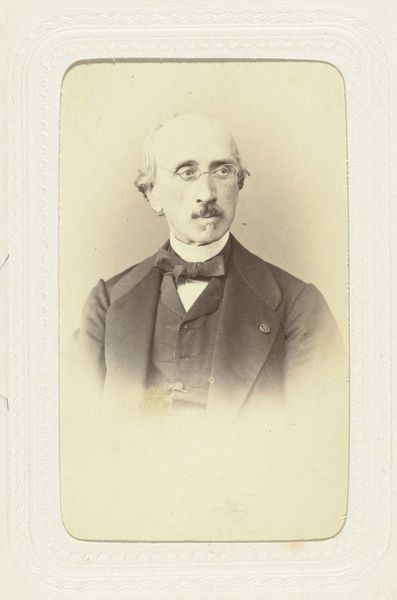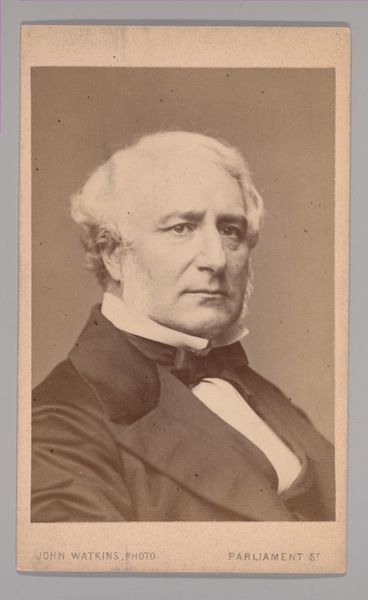
photography, gelatin-silver-print
#
photography
#
gelatin-silver-print
#
realism
Dimensions: 3 13/16 x 2 1/4 in. (9.68 x 5.72 cm) (image)3 13/16 x 2 1/4 in. (9.68 x 5.72 cm) (mount)
Copyright: Public Domain
Editor: Here we have "Charles Fisher," a gelatin silver print photograph taken between 1869 and 1874 by Jeremiah Gurney. It strikes me as a very straightforward portrait; how would you approach analyzing this particular piece? Curator: The material presence of this gelatin silver print, likely mounted on card, immediately brings the means of photographic production to the forefront. Think about the chemistries, the specific techniques used by Gurney – the hand-applied emulsions and development processes. These weren't mass-produced prints as we understand them today. Editor: So you're focusing on the labor and craftsmanship involved in creating this image? Curator: Exactly. And the social context. A portrait like this was a carefully staged and constructed representation. Consider the sitter's pose, his clothing, even the photographic studio itself. These were all commodities within a growing market of self-representation. How does the very act of producing such a portrait become a means of conveying status and belonging? Editor: I never thought of it that way. The subject’s suit does look quite deliberate and his bearing suggests someone important. Curator: Furthermore, where was the silver sourced? How were the photographic chemicals produced? What was the working environment of Gurney's studio like? Thinking materially opens questions beyond simply "who is this?" or "is it a good likeness?" It explores photography as an industrial and social practice. Editor: That makes me consider the value placed on material objects and images back then. It was very different to how we think about digital photographs now, given their intangible and reproducible qualities. Curator: Precisely! It urges us to rethink our perception and assumptions regarding "high art" and more “common” objects such as cartes de visite. We are able to examine them both using materiality. Editor: I see your point. Thanks, that's a totally fresh way of looking at things. Curator: Indeed. This perspective invites a deeper consideration of material’s place in social value construction.
Comments
No comments
Be the first to comment and join the conversation on the ultimate creative platform.
